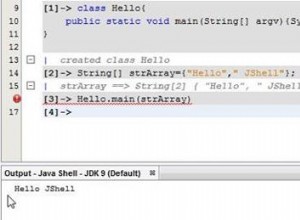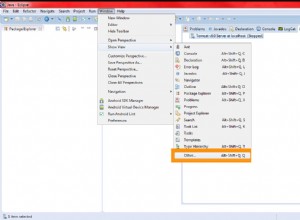Không, bạn không thể trực tiếp thay đổi trạng thái tài khoản từ EXPIRE (GRACE) thành MỞ mà không cần đặt lại mật khẩu.
tài liệu nói:
Tuy nhiên, bạn có thể gián tiếp thay đổi trạng thái thành MỞ bằng cách đặt lại băm mật khẩu của người dùng về giá trị hiện có. Thật không may, việc đặt băm mật khẩu cho chính nó có những phức tạp sau và hầu hết mọi giải pháp khác đều bỏ qua ít nhất một trong những vấn đề sau:
- Các phiên bản khác nhau của Oracle sử dụng các kiểu băm khác nhau.
- Hồ sơ của người dùng có thể ngăn việc sử dụng lại mật khẩu.
- Giới hạn hồ sơ có thể được thay đổi, nhưng cuối cùng chúng ta phải thay đổi các giá trị.
- Giá trị cấu hình không tầm thường vì nếu giá trị là
DEFAULT, đó là một con trỏ đếnDEFAULTgiá trị của hồ sơ. Chúng tôi có thể cần kiểm tra hồ sơ một cách đệ quy.
Sau đây, khối PL / SQL cực kỳ lớn, sẽ xử lý tất cả các trường hợp đó. Nó sẽ đặt lại bất kỳ tài khoản nào thành MỞ, với cùng một băm mật khẩu, bất kể phiên bản Oracle hoặc cài đặt cấu hình. Và hồ sơ sẽ được thay đổi trở lại giới hạn ban đầu.
--Purpose: Change a user from EXPIRED to OPEN by setting a user's password to the same value.
--This PL/SQL block requires elevated privileges and should be run as SYS.
--This task is difficult because we need to temporarily change profiles to avoid
-- errors like "ORA-28007: the password cannot be reused".
--
--How to use: Run as SYS in SQL*Plus and enter the username when prompted.
-- If using another IDE, manually replace the variable two lines below.
declare
v_username varchar2(128) := trim(upper('&USERNAME'));
--Do not change anything below this line.
v_profile varchar2(128);
v_old_password_reuse_time varchar2(128);
v_uses_default_for_time varchar2(3);
v_old_password_reuse_max varchar2(128);
v_uses_default_for_max varchar2(3);
v_alter_user_sql varchar2(4000);
begin
--Get user's profile information.
--(This is tricky because there could be an indirection to the DEFAULT profile.
select
profile,
case when user_password_reuse_time = 'DEFAULT' then default_password_reuse_time else user_password_reuse_time end password_reuse_time,
case when user_password_reuse_time = 'DEFAULT' then 'Yes' else 'No' end uses_default_for_time,
case when user_password_reuse_max = 'DEFAULT' then default_password_reuse_max else user_password_reuse_max end password_reuse_max,
case when user_password_reuse_max = 'DEFAULT' then 'Yes' else 'No' end uses_default_for_max
into v_profile, v_old_password_reuse_time, v_uses_default_for_time, v_old_password_reuse_max, v_uses_default_for_max
from
(
--User's profile information.
select
dba_profiles.profile,
max(case when resource_name = 'PASSWORD_REUSE_TIME' then limit else null end) user_password_reuse_time,
max(case when resource_name = 'PASSWORD_REUSE_MAX' then limit else null end) user_password_reuse_max
from dba_profiles
join dba_users
on dba_profiles.profile = dba_users.profile
where username = v_username
group by dba_profiles.profile
) users_profile
cross join
(
--Default profile information.
select
max(case when resource_name = 'PASSWORD_REUSE_TIME' then limit else null end) default_password_reuse_time,
max(case when resource_name = 'PASSWORD_REUSE_MAX' then limit else null end) default_password_reuse_max
from dba_profiles
where profile = 'DEFAULT'
) default_profile;
--Get user's password information.
select
'alter user '||name||' identified by values '''||
spare4 || case when password is not null then ';' else null end || password ||
''''
into v_alter_user_sql
from sys.user$
where name = v_username;
--Change profile limits, if necessary.
if v_old_password_reuse_time <> 'UNLIMITED' then
execute immediate 'alter profile '||v_profile||' limit password_reuse_time unlimited';
end if;
if v_old_password_reuse_max <> 'UNLIMITED' then
execute immediate 'alter profile '||v_profile||' limit password_reuse_max unlimited';
end if;
--Change the user's password.
execute immediate v_alter_user_sql;
--Change the profile limits back, if necessary.
if v_old_password_reuse_time <> 'UNLIMITED' then
if v_uses_default_for_time = 'Yes' then
execute immediate 'alter profile '||v_profile||' limit password_reuse_time default';
else
execute immediate 'alter profile '||v_profile||' limit password_reuse_time '||v_old_password_reuse_time;
end if;
end if;
if v_old_password_reuse_max <> 'UNLIMITED' then
if v_uses_default_for_max = 'Yes' then
execute immediate 'alter profile '||v_profile||' limit password_reuse_max default';
else
execute immediate 'alter profile '||v_profile||' limit password_reuse_max '||v_old_password_reuse_max;
end if;
end if;
end;
/




